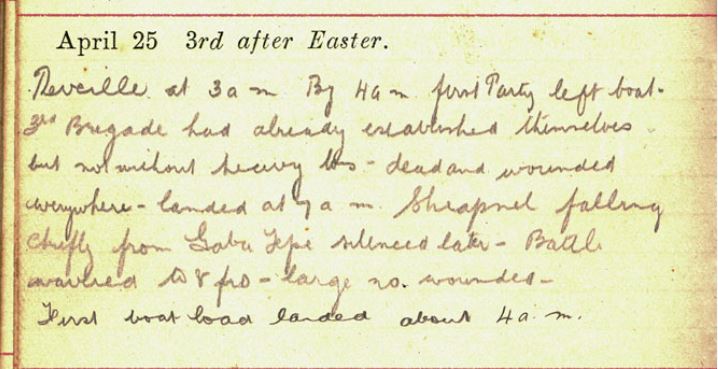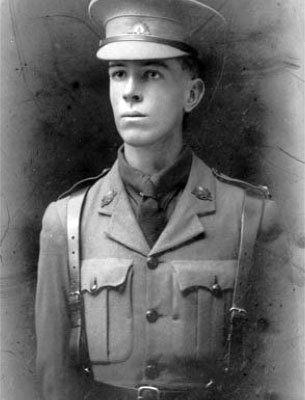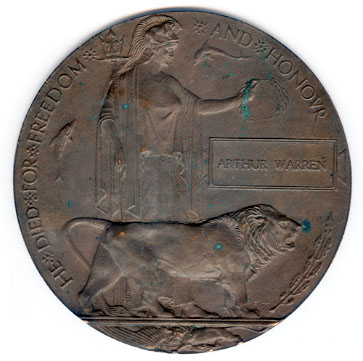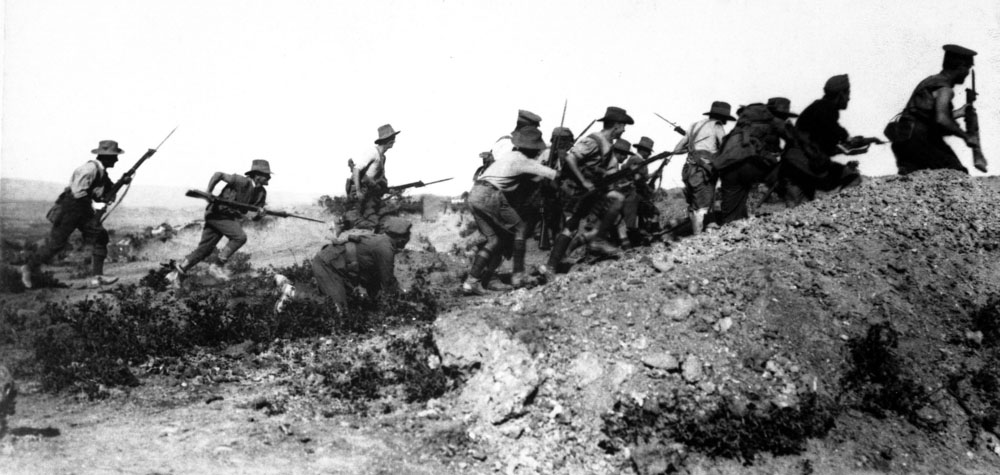Ipswich’s Arthur Warren was an Anzac who landed at Gallipoli at 7am on April 25, 2015.
The family of Arthur Warren kindly provided Picture Ipswich with the opportunity to document Mr Warren’s dairy and other resources in the collection. Ipswich Libraries runs a website Picture Ipswich, which is an online database that captures the lifestyle and history of Ipswich.

Image courtesy Picture Ipswich
Mr Warren’s diary makes for fascinating reading as it begins the very month he joined the Australian Imperial Force and ends in November 2015.
His diary records the day he came ashore at Gallipoli, Turkey on what we now know as Anzac Day.
The entry for April 25, 2015 reads:
April 25, 3rd after Easter – Reveille at 3am. By 4am first party left boat, 3rd Brigade had already established themselves but not without heavy loss – dead and wounded everywhere – landed at 7am. Shrapnel falling chiefly from Gaba Tepe silenced later- Battle wavered to and fro large no [number] wounded – First boat load landed about 4 am.
Who was Arthur Warren?
Ipswich Grammar School Old Boy Arthur Warren was 20 years old and a school teacher at North Ipswich State School when he applied for a commission in the Australian Imperial Force.
Mr Warren had already served as a second lieutenant in his local battalion and was accepted with the rank of second lieutenant in January 1915 and was on a ship, Seang Choon, heading for Egypt one month later.
In August 1915 he was promote to lieutenant and in November he oversaw the preparation for the evacuation of Gallipoli. Lt Warren was promoted to captain in February 1916 and sailed with the 9th Battalion to France.

Arthur Warren. Image courtesy Picture Ipswich
The Last Post Ceremony commemorating his service at the Australian War Memorial tells of his final hours:
In June the battalion began preparations for a raid on German positions near Fleurbaix, close to a position known as the “sugarloaf”. On the night of 18 June Captain Warren led a reconnaissance patrol to familiarise some of the raiders with the ground over which they would be operating. As the party reached the German wire, a commotion was heard in the nearby trenches and the men hit the ground. There was a brief lull and then, according to the diary of one of the men in the patrol, “a flash and Captain Warren was killed”. The men collected their officer’s body and with great difficulty withdrew back to their own lines.
Captain Warren is buried at No. 1 Military Cemetery at Rue-du-Bois, near Armentieres.

The “Dead Man’s Penny” is a commemorative bronze medallion which was presented to the next-of-kin of men and women who died during World War One. The deceased soldier’s name is on the right with no rank provided to show equality in sacrifice. The inscription on the edge of the medal reads” He died for freedom and honour. This medal was issued to the family of Captain Arthur Warren.
The memorial plaques were sent out in 1922. Approximately 60, 000 were issued in Australia.


